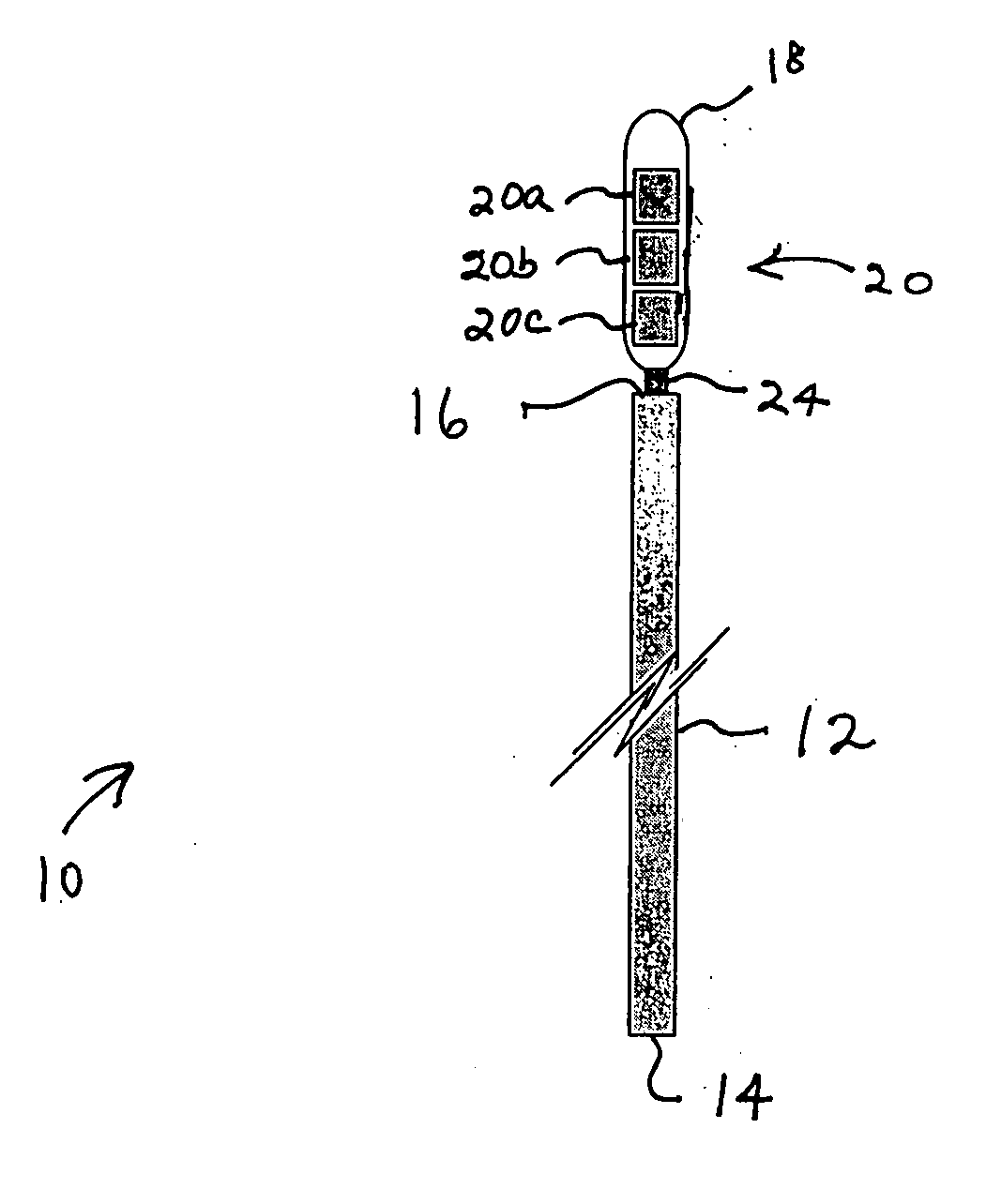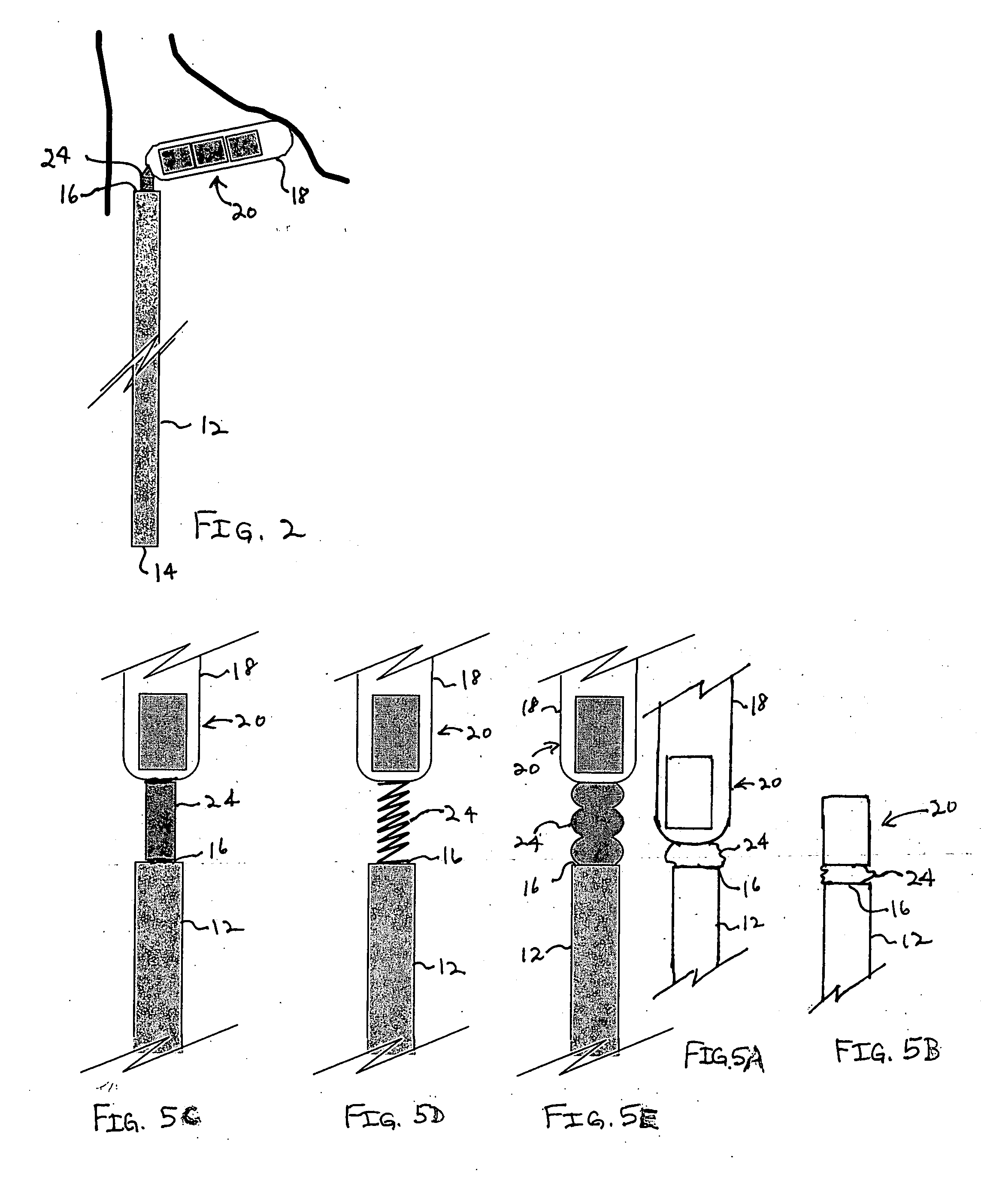Method and apparatus for indicating an encountered obstacle during insertion of a medical device
a medical device and anatomical technology, applied in the field of medical devices, can solve the problems of non-radiographic alternatives, inventions that do not image the internal anatomy of patients, and carry ionizing radiation risks for both patients and caregivers
- Summary
- Abstract
- Description
- Claims
- Application Information
AI Technical Summary
Problems solved by technology
Method used
Image
Examples
Embodiment Construction
[0020] As will be discussed in greater detail herein, a method and apparatus disclosed herein can indicate internal, anatomical obstacles encountered during medical device insertion by allowing the inserted medical device's tracked element, when attached to the distal end of the medical device, to easily bend at an angle to the direction of travel.
[0021] An exemplary embodiment of the present invention is illustrated in a system 10 illustrated in FIG. 1. The system 10 includes a medical elongated member 12 having a proximal end portion 14 and a distal end portion 16. The distal end portion 16 is designed for insertion into the body. For example, the elongated member 12 may be designed as a cardiac catheter with the distal end portion 16 being inserted into a desired location within the heart.
[0022] A vessel or chamber 18 is flexibly coupled to the distal end portion 16 of the elongated member 12. Contained within the chamber 18 is a location indicating element 20. In one embodimen...
PUM
 Login to View More
Login to View More Abstract
Description
Claims
Application Information
 Login to View More
Login to View More - R&D
- Intellectual Property
- Life Sciences
- Materials
- Tech Scout
- Unparalleled Data Quality
- Higher Quality Content
- 60% Fewer Hallucinations
Browse by: Latest US Patents, China's latest patents, Technical Efficacy Thesaurus, Application Domain, Technology Topic, Popular Technical Reports.
© 2025 PatSnap. All rights reserved.Legal|Privacy policy|Modern Slavery Act Transparency Statement|Sitemap|About US| Contact US: help@patsnap.com



